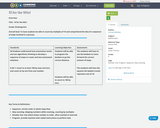
To have students be able to count by multiples of 10 and comprehend the idea of a sequence of steps involved in a process.
- Subject:
- Mathematics
- Material Type:
- Activity/Lab
- Author:
- Carmen Blackley
- Date Added:
- 08/03/2020

To have students be able to count by multiples of 10 and comprehend the idea of a sequence of steps involved in a process.
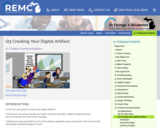
Students select a technology resource to use to best communicate their main idea to others.
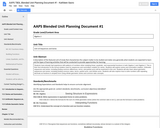
Students have already had experience with patterns of numbers when studying linear, quadratic, and exponential functions in both Algebra 1 and Algebra 2. This is their first introduction to the formal notation used for sequences and summation notation for series. Students will explore series and summation notation. Arithmetic sequences and series, including finding common differences, terms, and partial sums will be examined in this unit. Students will also learn about geometric sequences and series, including finding common ratios, terms, partial sums, and infinite sums. Students will also explore how to write numbers with repeating decimals as fractions in simplest form using infinite geometric series and common ratio concepts.
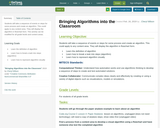
Students will take a sequence of events or steps for some process and create an algorithm. This could apply to any content area. They will display the algorithm in flowchart form. This activity can be modified for all grade levels and content areas.
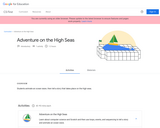
Students animate an ocean wave, then tell a story that takes place on the high seas.
Adventure on the High Seas is a one-hour activity designed to be completed within 45-75 minutes. Students will watch a series of videos and create one coding project with opportunities to personalize their work using “Add-Ons,” which are mini-coding challenges that build on top of the core project.
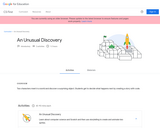
Two characters meet in a world and discover a surprising object. Students get to decide what happens next by creating a story with code.
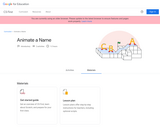
Students pick a name or word and bring the letters to life through animation, sound, and music.
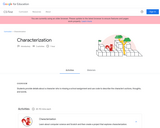
Students provide details about a character who is missing a school assignment and use code to describe the character's actions, thoughts, and words.
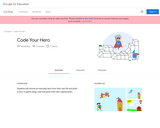
Students will choose an everyday hero from their own life and build a story or game using code that gives their hero superpowers.

Students bring the Google logo to life using code, utilizing programming and design.
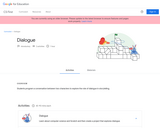
Students program a conversation between two characters to explore the role of dialogue in storytelling.
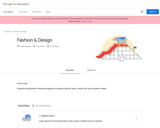
Students build fashion-themed programs including a fashion walk, a stylist tool, and a pattern maker.
Fashion & Design is a complete theme designed to be completed over eight, 45-75 minute sessions. For each Activity, students will watch a series of videos and create one coding project with opportunities to personalize their work using “Add-Ons,” which are mini-coding challenges that build on top of the core project.
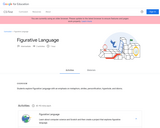
Students explore Figurative Language with an emphasis on metaphors, similes, personification, hyperbole, and idioms.
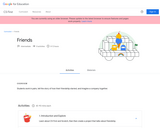
Students work in pairs, tell the story of how their friendship started, and imagine a company together.
Friends is a complete theme designed to be completed over eight, 45-75 minute sessions. For each Activity, students will watch a series of videos and create one coding project with opportunities to personalize their work using “Add-Ons,” which are mini-coding challenges that build on top of the core project.
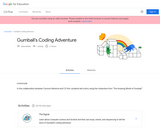
In this collaboration between Cartoon Network and CS First, students tell a story using the characters from “The Amazing World of Gumball.”
Gumball’s Coding Adventure is a one-hour activity designed to be completed within 45-75 minutes. Students will watch a series of videos and create one coding project with opportunities to personalize their work using “Add-Ons,” which are mini-coding challenges that build on top of the core project.
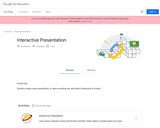
Students create a new presentation, or take an existing one, and make it interactive in Scratch.
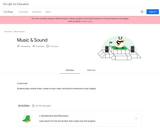
Students play musical notes, create a music video, and build an interactive music display.
Music & Sound is a complete theme designed to be completed over eight, 45-75 minute sessions. For each Activity, students will watch a series of videos and create one coding project with opportunities to personalize their work using “Add-Ons,” which are mini-coding challenges that build on top of the core project.

Students take an existing story and explore first and third person point of view.
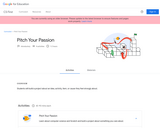
Students will build a project about an idea, activity, item, or cause they feel strongly about.
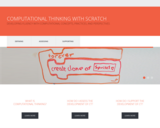
This site and its collection of instruments are designed for K-12 educators and researchers interested in supporting and assessing the development of computational thinking through programming. There are sections on: What is Computational Thinking?; How Do I Assess the Development of CT?; and How Do I Support the Development of CT?.